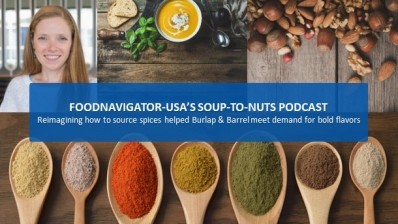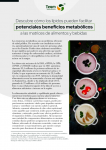Soup-To-Nuts Podcast: What is the business proposition for 100% grass fed dairy?

Feeding cattle 100% grass often results in lower production compared to conventional methods, which leads to higher prices that may be difficult for consumers to justify in the current economy. This is especially true given many Americans do not understand the benefits of 100% grass-fed claims or how it stacks up to other callouts, such as unquantifed grass-fed claims or those for pasture-raised or organic. This confusion is compounded by a lack of federal regulatory oversight of grass-fed dairy claims, which opens the door to greenwashing and can create an uneven playing field.
But the practice also creates a viable path for small family farmers to make a living without investing in and managing thousands of cows. At the same time, consumers increasingly want to support small and midsized businesses and their local economies. They also increasingly are drawn to other elements that often go hand in hand with 100% grass fed production -- including regenerative organic agriculture, increased transparency to the farm level and a lighter environmental impact than conventional methods.
In this episode of FoodNavigator-USA's Soup-To-Nuts podcast, dairy brand Maple Hill’s Founder Tim Joseph examines the business case for 100% grass-fed dairy production as well as its impact on nutrition, animal welfare and the environment. He also highlights challenges threatening the burgeoning segment and how stakeholders are working together to find solutions.
[Editor’s note: Never miss an episode of FoodNavigator-USA’s Soup-To-Nuts podcast or our recently launched Founders’ Fundamentals podcast – subscribe today.]
Why Maple Hill values ‘this crazy grass-fed stuff’
When Joseph first purchased his dairy farm in the early 2000s, he practiced conventional methods, but quickly switched to 100% grass fed to improve the health of his cows and business.
He explains that early in his dairy farming days he was flummoxed by why a rotating handful of his 50-cow herd constantly struggled with metabolic dysfunctions. At the same time, he said, he heard about “this crazy grass fed stuff,” and decided to test if it could improve his herd’s gut health.
Joseph explained when he replaced the grain he fed his herd with fresh grass in the fields in the warm months and hay or stored grass in the winter he noticed a reduction in metabolic distress and an uptick in the life- and production-span of his cows – reducing his investment costs in replacement animals when they leave the herd or no longer produce milk.
The shift also allowed Joseph to enter a burgeoning niche market where he could charge a necessary premium and set himself apart from the larger conventional dairy producers that otherwise easily could outcompete him on price due to their economies of scale.
A standard definition, third-party certification protects grass-fed market from greenwashing
As Joseph noted, when he adopted a grass-fed diet for his dairy cows the term was not defined in the regulations – and it still isn’t. So, to ensure consistent care, a level playing field and that consumers understood what grass-fed meant, he worked with other industry leaders to define the term and establish a third-party certification standard.
“100% grass-fed at the very basic level is no grain, no corn, forage and mother’s milk from birth,” said Joseph, but he adds he does allow the use of molasses and other enticements to help feed cows – especially when there are problems on the pasture.
He explained that within dairy anyone can make a grass-fed claim from a regulatory perspective if the cow eats just a small amount, but that creating a third-party certification gave Maple Hill and others a way to help retailers evaluate the claims and enforce against greenwashing at an industry level.
It also reassures consumers who expect increased nutrition, higher animal welfare standards and improved environmental stewardship when they see the claim, he said.
Grass-fed dairy ‘is very sticky’ despite inflation
Third-party certification also is essential for grass-fed dairy because it commands a higher price point, according to Joseph, who explains the costs are higher because outputs are lower.
Despite lower output, grass-fed dairy farmers can make their numbers work in part because consumers see the value of their products and are willing to pay more despite inflation.
'We have not seen people trading down from grass-fed organic to organic or other products based on price' -- Tim Joseph, founder of Maple Hill
Joseph explains during COVID consumers looked for more nutrient dense foods, like grass-fed dairy, to support their health and in general were unwilling to trade down to something they perceive as less healthy.
“Grass-fed dairy … is such an integral part of our protein consumption in America, and particularly with families … that they might trade down on other products in the grocery store, but as of yet, we have not seen people trading down from grass-fed organic to organic or other products based on price,” he said.
“It is very sticky and that has helped us immensely, and also … allowed us to increase price to our farmers,” so the practice remains viable for them, he added.
“It is a very compelling proposition for the farms, and continues to be compelling for our consumers,” he said.
Farmer, consumer benefits of grass-fed dairy
Part of what makes grass-fed dairy compelling for small and mid-size producers, according to Joseph, is they often can manage their system more effectively and efficiently than large producers – allowing them to carve out and hold onto market share and ultimately push back against mounting consolidation and inflation pressures.
On the consumer-side, what makes grass-fed dairy compelling is its documented nutritional benefits compared to conventionally produced dairy, and Joseph notes anecdotally, the flavor and mouthfeel. He adds grass-fed dairy’s association with regenerative agriculture also helps generate consumer excitement and drive trial.
As consumer awareness about the health and environmental benefits of grass-fed dairy increases, Joseph expects to see a jump in demand, which he says active producers already are struggling to meet. That means there is opportunity for small and emerging brands to enter the space and benefits.
“It is a tough segment to play in, but it is worthwhile. And, it is the old you always want to look where the puck is going, and … people are gravitating towards more natural, higher values in terms of their food,” he said. “I do not think it is going to stop, and I hope the industry can continue to grow high-integrity supply, so that we are delivering on that to the true grass-fed consumers.”



















